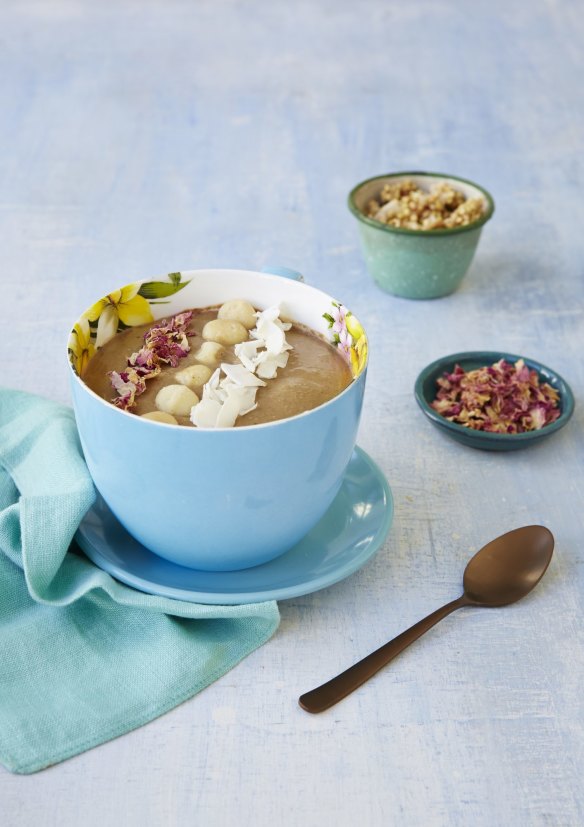The problem with green juices is ...
The thing with green juices…
Is that they're really, really fattening. I know, I know. But they're…..green!! And there's kale in there. And young women on Instagram who look great in yoga leggings love them!
I know, I know. But the truth is, many contain more sugar than a can of Coke. Why? Well, when you extract the juice from something, that's all you're taking. The juice. The fibre is stripped out and the pulp is thrown away. So you need far more produce than you'd ever normally eat in one go. And let's be honest – no green juice only contains greens. Many only contain a small number of vegies and a lot of apples, bananas or other fruit. Because straight kale and cucumber isn't all that easy to sell in.
To put things in perspective, a large glass of apple juice contains about nine teaspoons of sugar, which is why the World Health Organization, as of last year, classified juice as added (or "free") sugar. And, no, it doesn't matter if it's from a bottle or freshly pressed. It's the same stuff once in our bodies.
And to put things in even more perspective, the WHO also advises we should be consuming no more than six to nine teaspoons of free sugars a day (which is what I've been sticking to for the past five years). For younger children, it's three teaspoons. So, you see the issue.
Now, the other thing with green juices is they are the worst kind of sugar – liquid sugar. Don't get me wrong (a lot of people do), whole fruit is great. As per Australian guidelines, we should be eating a few pieces a day. Although, as per what our grandparents probably said, it should be eaten as a treat.
But when you take out the fibre, you're left with liquid sugar, which travels super fast to the liver, where it metabolises it, almost instantly, as fat. The worst kind of fat – visceral fat around the organs, the kind that produces beer guts and muffin tops and all kinds of health issues.
Also, know this: All those essential vitamins and minerals that green juice fans speak of … they're fat-soluble only. So, consumed on their own, without fat or protein (so, not as a proper, normal meal), you're kinda wasting the goodness of your arugula, and a lot of the most nutritious bits (the skin). And resources! There's so much waste. Not to mention the money you spend.
Perhaps, try this: The solution, should you absolutely need a liquid breakfast, is a green smoothie. Blend your vegies and a little fruit (one piece at a time) with foods like avocado, milk, nuts and grains. Or even a little cacao. Make a whole meal of it, in a bowl, if you need. Or, you know, just eat a proper, normal meal.

Choco-Macadamia Crunch Smoothie Bowl
Serves: 2
Prep time: 2 minutes
2 ½ cups almond milk
¼ cup coconut milk
¼ cup chia seeds
1 small banana, frozen, chopped into chunks
⅔ cup macadamias, soaked in water for 2 hours, plus extra for topping
¼ cup raw cacao powder
1 ½ cups baby spinach leaves
1 teaspoon cinnamon, ground
½ teaspoon ginger, ground
½ teaspoon vanilla bean powder
1 tablespoon coconut flakes, to serve
Edible flowers, to serve, optional
Throw all ingredients (except the coconut flakes and the extra macadamias) into a blender and blend until smooth. Pour smoothie into two bowls and allow to sit for 10 minutes in the fridge to thicken up.
Remove from the fridge and top each serve with macadamias, coconut flakes and edible flowers, if using.
Recipe courtesy of I Quit Sugar
The best recipes from Australia's leading chefs straight to your inbox.
Sign up